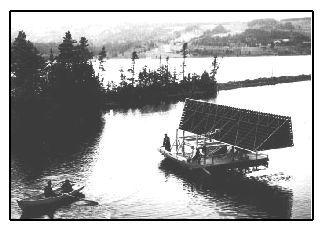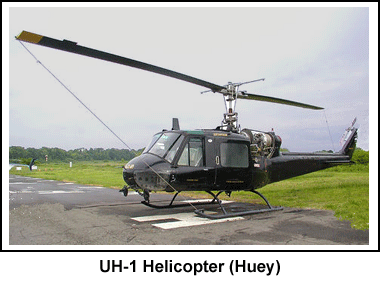The "Kite" Enshrined As A Universal and Enduring Toy
Toys build physical and mental skills; foster creativity and imagination; encourage critical and strategic thinking; teach fair play and cooperation; connect kids and adults; hold memories and provide windows into the past; reflect the ideas, beliefs, values, and attitudes of their creators and users; reveal historical change; predict the future; educate and entertain.
Kites and the Whitney Museum of American Art
 The Whitney Museum of American Art is mounting an exhibition sometime in the future that will focus on Alexander Graham Bell. The exact date of the exhibit has not yet been announced.
The Whitney Museum of American Art is mounting an exhibition sometime in the future that will focus on Alexander Graham Bell. The exact date of the exhibit has not yet been announced.While Bell has never been viewed as an 'artist', the museum feels that his work as recorded in his many notebooks utilized artistic expression to detail his ideas and concepts that were under development at various stages in his career as an inventor.
Bell was famous for including sketches and diagrams of his concepts. Many of his original sketches of his "ring" and "tetrahedral kites" are well known to kite historians, but they have not been widely revealed to the public.
I was pleased to be asked by Kristen France of the Whitney curatorial staff to assist with research on Bell's work with kites and the development of powered aircraft. The detailed research notes that I provided have been used to track down original photographs stored in the Library of Congress, the National Archives of Canada, and at the Alexander Graham Bell Museum in Baddeck, NS.
You can read more about the history of the Whitney Museum at:
http://www.whitney.org/www
Bell's Tetrahedral Kite - Centennial Celebrations
 One hundred years ago, on December 6, 2007, Alexander Graham Bell launched his largest tetrahedral kite, the Cygnet II, over the waters of Bras d'Or lake in Cape Breton, Nova Scotia. Towed behind a steam powered boat and carrying Lieut. Thomas Selfridge as passenger and to some degree pilot, the Cygnet was a milestone in the history of the development of flight and one of the most significant events in Canadian kite history.
One hundred years ago, on December 6, 2007, Alexander Graham Bell launched his largest tetrahedral kite, the Cygnet II, over the waters of Bras d'Or lake in Cape Breton, Nova Scotia. Towed behind a steam powered boat and carrying Lieut. Thomas Selfridge as passenger and to some degree pilot, the Cygnet was a milestone in the history of the development of flight and one of the most significant events in Canadian kite history.
A great deal of attention is being paid to the tetrahedral kites of Dr. Bell during this centennial celebration year marking the historic flight of the huge Cygnet. It certainly is a time to pause and remember the amazing ingenuity of the era as humans searched for the best ways to lift people into the sky in a safe and controlled manner.
Bell's intention was to use the inherently strong tetrahedron as a building block for an 'aerodrome' (aircraft) that would eventually be powered by a gasoline engine and achieve independent flight under the control of a pilot.
The Halifax Chronicle Herald ran a feature story on the work of Bell's Aerial Experiment Association, a group of five engineer-scientist fellows. The group was funded with a $30,000 investment provided by Mabel Bell, Dr. Bell's wife, who acted as the group's Secretary-Treasurer.
Uplifting dream was born century ago
Within 18 months, Bell-led group had Silver Dart in Baddeck sky
By TERA CAMUS Cape Breton BureauThe ChronicleHerald.ca October 1, 2007
BADDECK — It was 100 years ago today when it all began.
High on the hill overlooking Baddeck Bay, Alexander Graham Bell invited four men to his estate to begin working on a dream that would literally take flight 18 months later, in 1909.
Backed with $30,000 from Mr. Bell’s wealthy socialite wife Mabel, five creative minds forged a partnership known as the Aerial Experiment Association after the famous, aging inventor convinced them they could take flight in an aircraft after experimenting with large kites on and over his Baddeck estate.
"It’s amazing to think that for thousands and thousands of years, we couldn’t fly and within 18 months, bang, we’re flying among the stars," Mr. Bell’s great-grandson, Hugh Bell Muller, told The Chronicle Herald inside the Kite House where the five men constructed the aircraft.
Mr. Muller and his wife still walk on the original floorboards of that former barn, now renovated into a comfortable home, where Alec Bell, as he was known locally, worked with British immigrant Douglas McCurdy, a resident of Baddeck, and Toronto’s Casey Baldwin, both expert engineers. He also invited United States Lt. Thomas Selfridge and Glenn Curtiss, a New Yorker who built engines.
All five men lived in "the big house," better known as Beinn Bhreagh, which now is only open in summers for Mr. Bell’s direct descendants.
"In Bell’s time, he knew all the scientists," Mr. Muller said. "As a kid, he dreamed about flying while watching the birds."
The Wright Brothers, who had proved an aircraft could lift off using a catapult method, were busy in the United States trying to understand how to maintain flight.
"Bell was concerned with two things, the first was safety and the other was stability of controls to maintain a flight," Mr. Muller said. "Ms. Bell told him: ‘The five of you get an airplane in that air’ and it took 18 months to get the Silver Dart."
The first aircraft built in the Kite House in 1907 was the Cygnet, but it had no engine. It carried Selfridge for seven minutes and 51 metres and "flew beautifully" before it crashed into the water below Mr. Bell’s estate.
Moving on from the Cygnet, Bell and the five members of the AEA built four powered airplanes that were stable and reliable in flight. The culminating aircraft was the famous "Silver Dart" which was the first airplane to fly in the British Commonwealth of Nations when it lifted off the frozen waters of Bras d'Or Lake on February 23, 1909.
During this centennial celebration year of the massive Cygnet kite, a special commemorative kite fly was organized by the Canadian Kite Federation/Federation Canadienne du Cerf-Volant amd the Drachen Foundation of Seattle WA. The event was held on the Bell estate at Beinn Bhreagh overlooking Bras d'Or Lake in Baddeck, Nova Scotia on August 21, 2007.
Gary Mark of CKF/FCCV and Scott Skinner of the Drachen Foundation were instrumental in putting together the kite fly tribute to Bell's work with the Cygnet kite. More information can be found in an excerpt from the web site of the Drachen Foundation. A terrific video of interviews with Gary Mark, principal organizer of the event, and Hugh Muller, great-grandson of Alexander Bell is found on a special video clip at YouTube. Another interesting video clip is the CBC-TV Newsworld live broadcast of the event, also at YouTube.
In the autumn of 2004, CBC ran a television series entitled: The Greatest Canadian. Alexander Graham Bell was one of the featured candidates for the title of the greatest Canadian. I had the privilege of working on the production of that television show along with my good friend Gary Mark. To read about that story you can see an earlier posting in the Best-Breezes blog that detailed Bell's tetrahedral kites and see how a kite was included in the video taping for the show.
In the web site section of Best-Breezes, you can find more detailed information on Bell's Cygnet kite, the aerodromes of the Aerial Experiment Association, and a variety of other references on Bell's work with kites and aircraft. Be sure to check out the article entitled: Alexander Graham Bell: After the Telephone - Tetrahedral Kites, Airplanes and Hydrofoils.
One hundred years later the memory of Alexander Graham Bell's giant tetrahedral kites still lifts the imagination and makes the spirit soar!
Afghan Kites Get a Lift from European Troops - Patang! Patang!
 Kites returned to most areas of Afghanistan after the Taliban government left office in 2002 when American troops entered the country. The Taliban had banned kite flying as a frivolous and 'non-Islamic' activity. Kites again took to the skies in the nation's capital, Kabul, right after the exit of the Taliban regime.
Kites returned to most areas of Afghanistan after the Taliban government left office in 2002 when American troops entered the country. The Taliban had banned kite flying as a frivolous and 'non-Islamic' activity. Kites again took to the skies in the nation's capital, Kabul, right after the exit of the Taliban regime.
Some areas of Afghanistan remained under local Taliban influence long after a new government was installed in Kabul. In these areas, kite making and kite flying were still not permitted.
Recently, the Polish Battle Group, part of a coalition force that is patrolling parts of Afghanistan in support of the new government, entered Ghazni province’s Andar district. Here, kite flying was still banned due to the local influence of Taliban sympathizers.
Since there is a strong tradition of kite making and kite flying in the Afghan culture (see previous stories in this Blog), the Polish troops came equipped with kites to aid them in making friends with the local residents.
Speaking to Black Anthem Military News, Polish Pfc Chris Demko reported:
“It seems like time stopped here 2,000 years ago. We see these kids running around with nothing, not even shoes, and we want to change that.”
Everywhere they went, children crowded around the vehicles as the smiling soldiers pulled out boxes of shoes, clothes, school supplies and toys. But the biggest hit of all were the multi-colored kites that the soldiers unfolded for them.
With big grins and excited chattering, the children jumped up and down shouting, “Patang! Patang!” (the Pashto word for kite.)
Soon the sky had several of the yellow, green and red kites with International Security Assitance Forces logos flying, much to the delight of the children dancing around below.
“These kites are so much fun,” said Mahmad-Amid Hahn, a 12-year- old boy, as he made whooping sounds while his kite dipped and swerved in the air. “The Taliban would never give us these things.”
For the children who had never seen a kite before, some of the Polish soldiers stepped in to assist, unfolding the kites and showing them how to take off with a running start to get it airborne.
In addition to the kites, the Polish forces distributed food, clothing, medical supplies and school supplies in an effort to assist the local people.
The kites that quickly climbed into the skies, however, seemed to be a large symbol that things had changed in the region.
_________________
Photo credit: U.S. Army photo by Spc. Micah E. Clare
Kite Lines Contribute to Tragic Helicopter Accident in Phillipines
 Kite lines appear to have been a major contributing factor in the crash of a Phillipine Air Force UH-1 helicopter in Lapu-Lapu City in the central Phillipines on Saturday afternoon, April 28, 2007. Nine people died in the horrific accident and several others were injured according to Phillipine press and military reports. Two of the deceased were air crew members while the remaining seven were civilians struck when the helicopter lost flight stability and crashed into the street.
Kite lines appear to have been a major contributing factor in the crash of a Phillipine Air Force UH-1 helicopter in Lapu-Lapu City in the central Phillipines on Saturday afternoon, April 28, 2007. Nine people died in the horrific accident and several others were injured according to Phillipine press and military reports. Two of the deceased were air crew members while the remaining seven were civilians struck when the helicopter lost flight stability and crashed into the street.
According to eye witness reports, as the helicopter flew over a market place it briefly came into contact with the nylon lines of three kites flying in the area. One of the kites was believed to be a poster of a candidate in an upcoming election.
AHN Global News Agency's correspondent Komfie Manalo reported the following in his story filed on Sunday, April 29, 2007:
"Lt. Gen. Horacio Tolentin, commanding general of the PAF, said that investigators found strands of nylon strings two millimetres in diamere entangled with the rotor system of the downed aircraft."
Although it was reported that the engine of the helicopter continued to run until the crash landing, it appeared as though the rotors had stopped moving.
General Tolentin also was quoted as saying that:
"there were no indications of an error or negligence by the pilot. The engine did not stop but witnesses said the rotor had stopped rotating as the helicopter dropped, he said.
He said the strands of nylon string found on the rotor system reinforced the investigators' theory that the accident was caused by a kite that was entangled with the helicopter's rotor.
He said investigators learned that at least three kites were being flown close to the Philippine Air Force base on Mactan Island at the time when the helicopter crashed as it was preparing to land."
In North America, flying kites near airports is strictly regulated by government agencies. In the United States the regulations are established and enforced by the FAA (Federal Aviation Administration). In Canada the regulations are established and enforced by Transport Canada. The rules in both nations cover the proximity to an air field and the height at which kites can be flown.
This tragic story reminds kiters to be responsible with their kite line and kites in the air. Safe flying practices should be maintained at all times and kites should constantly be monitored to ensure that there is no danger of breaking away.
Just a little over a year ago, on April 8, 2006, I also posted an entry encouraging kiters to be cautious with their kite line. In that story, Breakaway Kites Can Pose Major Safety Hazard, I outlined some examples of why kiters need to respect the strength of their kites and kite lines at all times.




